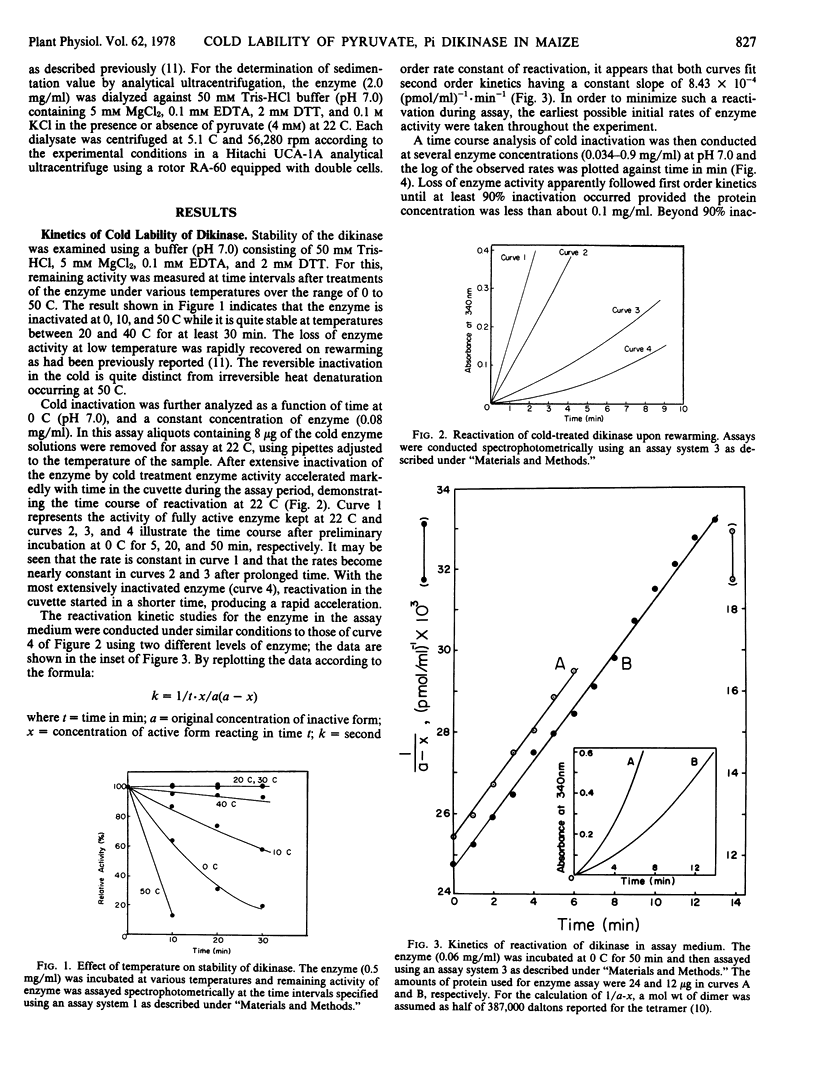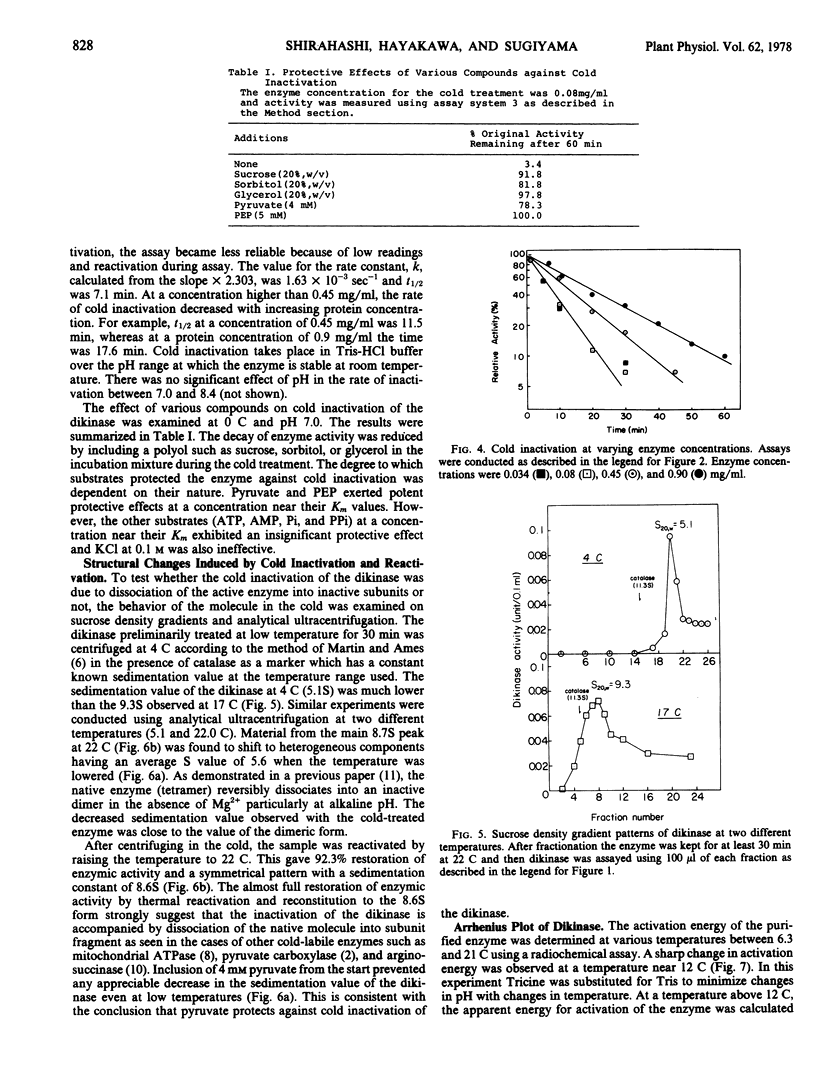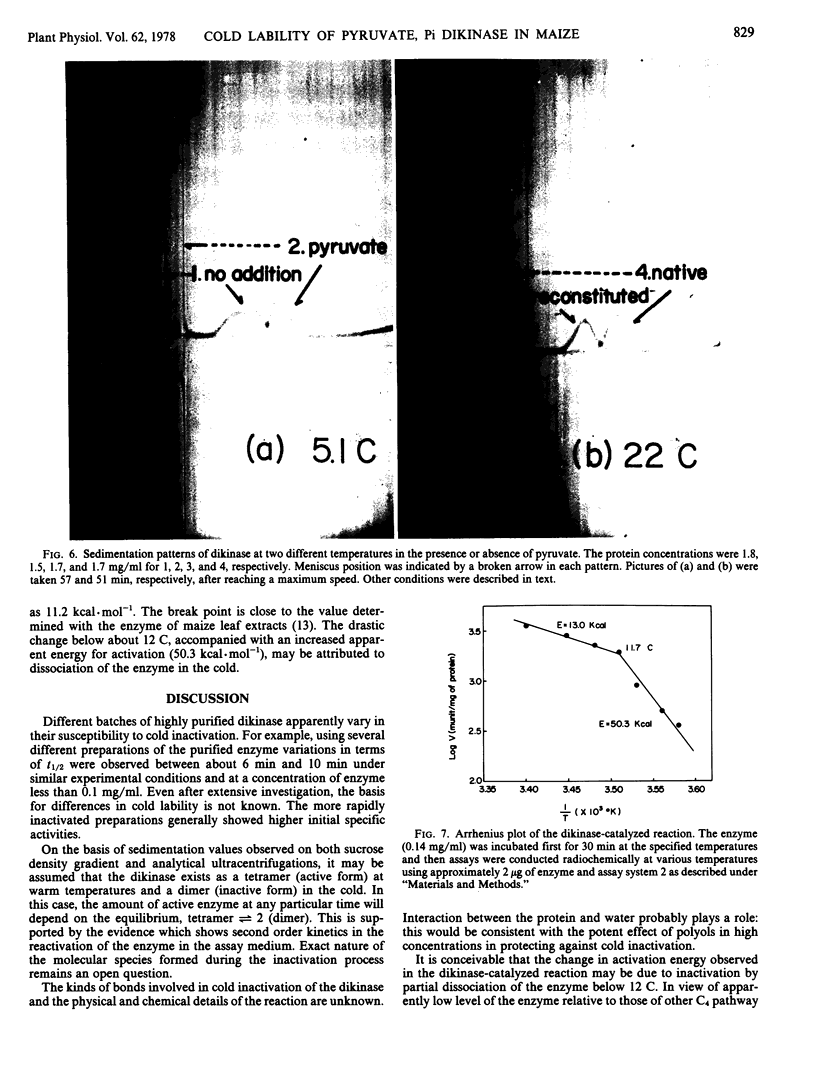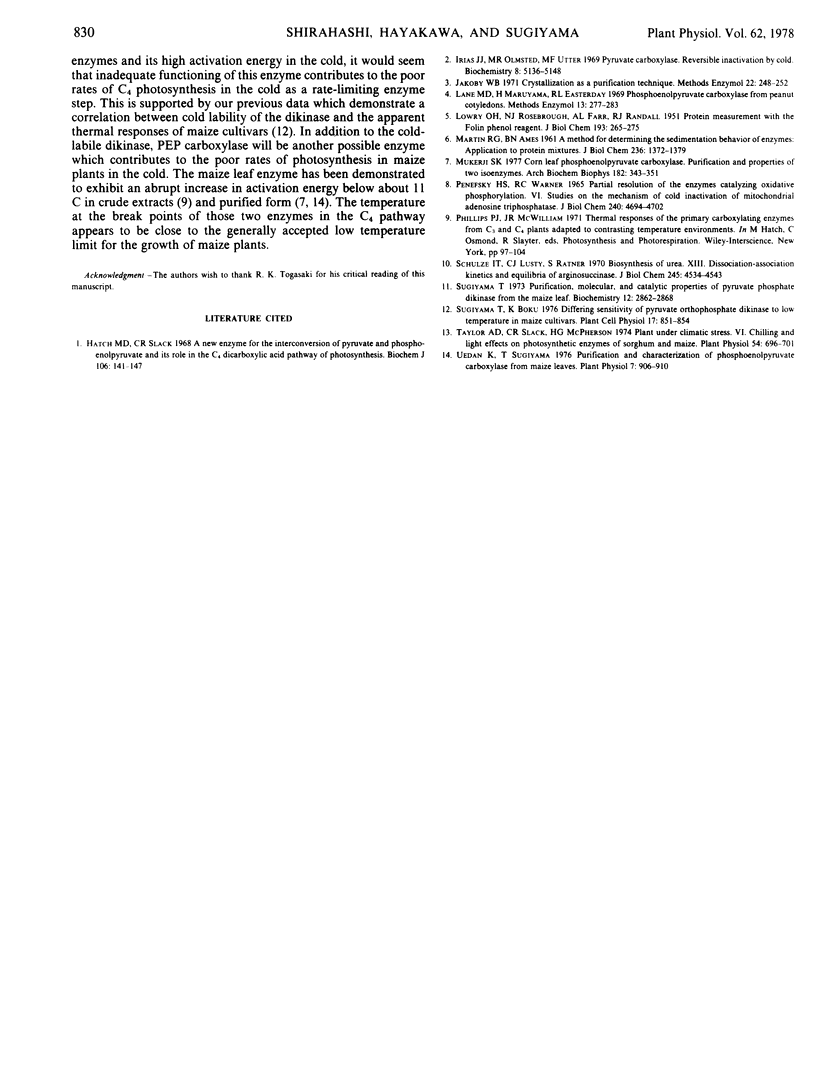Abstract
Cold lability of pyruvate, orthophosphate dikinase was investigated using a homogeneous, purified enzyme preparation from maize (Zea mays L. var. Golden Cross Bantam T51) leaves. Its stability was markedly reduced below about 10 C and the rate of cold inactivation followed first order kinetics at a concentration lower than about 0.1 milligram of enzyme per milliliter. Cold inactivation was little affected by pH in the range which gives good stability for the enzyme at warm temperatures and the enzyme activity was protected strongly by inclusion of substrates (pyruvate and phosphoenolpyruvate) and polyols such as sucrose, sorbitol, and glycerol. Loss of catalytic activity was accompanied by an apparent dissociation of a tetrameric form of the enzyme (9S form) into a new, more slowly sedimenting (5.1S) component. Inclusion of pyruvate at 4 mM in the cold-treated enzyme had no effect on the sedimentation value. A sharp change in activation energy of the dikinase-catalyzed reaction was observed near 12 C and its break point appears to be close to the generally accepted critical low temperature limit for the growth of maize plants.
Full text
PDF




Images in this article
Selected References
These references are in PubMed. This may not be the complete list of references from this article.
- Hatch M. D., Slack C. R. A new enzyme for the interconversion of pyruvate and phosphopyruvate and its role in the C4 dicarboxylic acid pathway of photosynthesis. Biochem J. 1968 Jan;106(1):141–146. doi: 10.1042/bj1060141. [DOI] [PMC free article] [PubMed] [Google Scholar]
- Irias J. J., Olmsted M. R., Utter M. F. Pyruvate carboxylase. Reversible inactivation by cold. Biochemistry. 1969 Dec;8(12):5136–5148. doi: 10.1021/bi00840a068. [DOI] [PubMed] [Google Scholar]
- LOWRY O. H., ROSEBROUGH N. J., FARR A. L., RANDALL R. J. Protein measurement with the Folin phenol reagent. J Biol Chem. 1951 Nov;193(1):265–275. [PubMed] [Google Scholar]
- MARTIN R. G., AMES B. N. A method for determining the sedimentation behavior of enzymes: application to protein mixtures. J Biol Chem. 1961 May;236:1372–1379. [PubMed] [Google Scholar]
- Mukerji S. K. Corn leaf phosphoenolpyruvate carboxylases. Purification and properties of two isoenzymes. Arch Biochem Biophys. 1977 Jul;182(1):343–351. doi: 10.1016/0003-9861(77)90315-0. [DOI] [PubMed] [Google Scholar]
- Penefsky H. S., Warner R. C. Partial resolution of the enzymes catalyzing oxidative phosphorylation. VI. Studies on the mechanism of cold inactivation of mitochondrial adenosine triphosphatase. J Biol Chem. 1965 Dec;240(12):4694–4702. [PubMed] [Google Scholar]
- Schulze I. T., Lusty C. J., Ratner S. Biosynthesis of urea. 8. Dissociation-association kinetics and equilibria of argininosuccinase. J Biol Chem. 1970 Sep 10;245(17):4534–4543. [PubMed] [Google Scholar]
- Sugiyama T. Purification, molecular, and catalytic properties of pyruvate phosphate dikinase from the maize leaf. Biochemistry. 1973 Jul 17;12(15):2862–2868. doi: 10.1021/bi00739a014. [DOI] [PubMed] [Google Scholar]
- Taylor A. O., Slack C. R., McPherson H. G. Plants under Climatic Stress: VI. Chilling and Light Effects on Photosynthetic Enzymes of Sorghum and Maize. Plant Physiol. 1974 Nov;54(5):696–701. doi: 10.1104/pp.54.5.696. [DOI] [PMC free article] [PubMed] [Google Scholar]
- Uedan K., Sugiyama T. Purification and characterization of phosphoenolpyruvate carboxylase from maize leaves. Plant Physiol. 1976 Jun;57(6):906–910. doi: 10.1104/pp.57.6.906. [DOI] [PMC free article] [PubMed] [Google Scholar]



